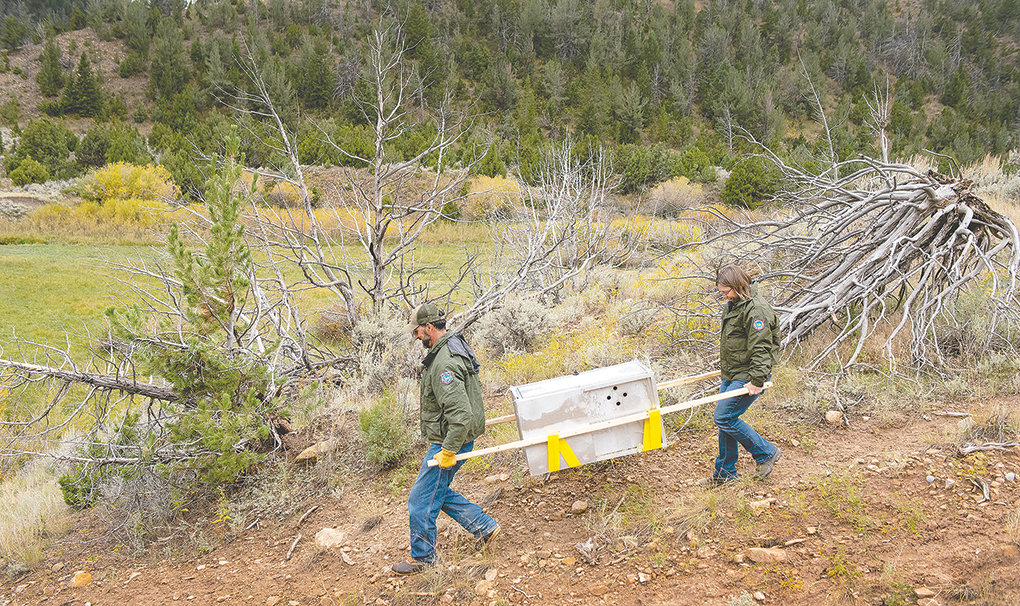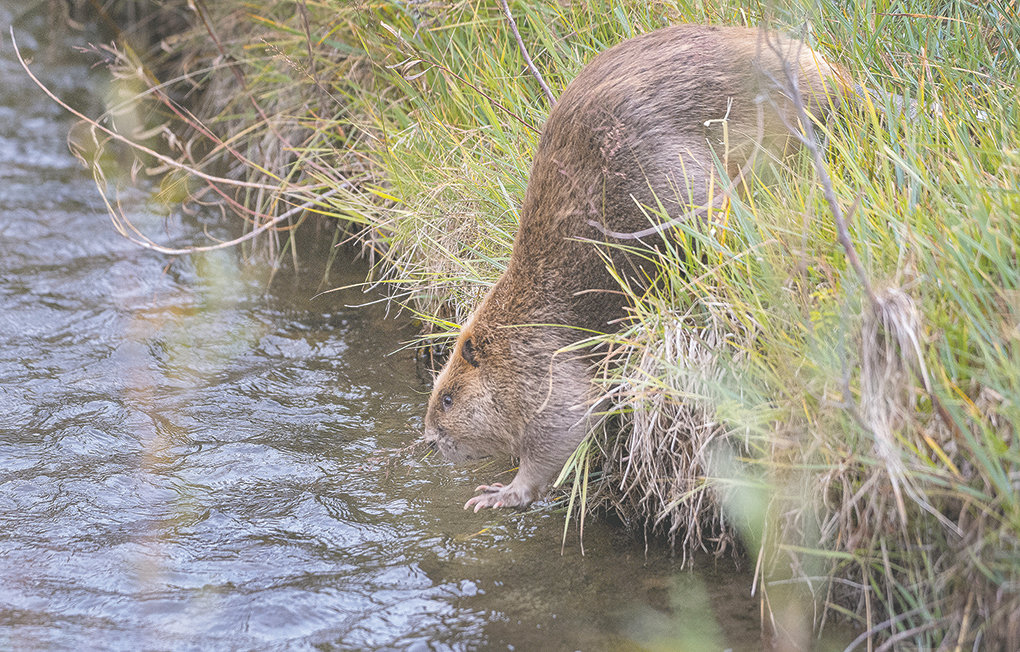Everyone has been thinking more about the desert beavers, as we get ready for the NM Summit. Apparently it grew out of advocates wish for Game and Fish to adopt a beaver management plan like Utah’s. Of course not ALL of Utah gets the idea. Some of the regions are still chugging along without a single beaverclue.
Beavers in the Desert? The Potential for Translocated Beavers to Serve as Restoration Tools in Desert Rivers
 The USGS Utah Cooperative Fish and Wildlife Research Unit at Utah State University (USU) is partnering with the Ecology Center (USU), the Bureau of Land Management, the Bureau of Reclamation, Utah Division of Wildlife Resources, and U.S. Department of Agriculture-National Wildlife Research Center to evaluate the efficacy of beaver translocation for desert river restoration by comparing the fates, space use, and dam building activity of naturally occurring and translocated beavers in the Price and San Rafael Rivers in eastern Utah.
The USGS Utah Cooperative Fish and Wildlife Research Unit at Utah State University (USU) is partnering with the Ecology Center (USU), the Bureau of Land Management, the Bureau of Reclamation, Utah Division of Wildlife Resources, and U.S. Department of Agriculture-National Wildlife Research Center to evaluate the efficacy of beaver translocation for desert river restoration by comparing the fates, space use, and dam building activity of naturally occurring and translocated beavers in the Price and San Rafael Rivers in eastern Utah.
Beaver translocation is an alternative solution to lethal control that is gaining popularity. Beavers are taken from a conflict situation and translocated to a targeted area with the goal of harnessing their dams as a passive, cost-effective, and natural method of restoration. The challenge of translocation is getting beavers to stay, survive, and build dams in a specific area. Success of beaver translocation projects varies widely and lacks standardized best practices; failures are typically undocumented, and the cause of failure is often unknown.
Well it’s known by the beaver I dare say, but I guess that’s not what you mean.
So far, nine naturally occurring beavers have been captured and monitored, seven adult residents and two subadults, while 31 nuisance beavers have been translocated to the rivers, 18 adults and 13 subadults. All individuals were fitted with a tail-mounted radio-transmitter and a PIT- (passive integrated transponder) tag for post-release monitoring. Most (65%) of the translocated beavers have unknown fate, from radio-transmitter failure or individuals leaving the targeted restoration areas, while only 33% of resident beavers had unknown fate. Translocated beavers also experienced proportionally higher mortality (19% vs. 11%), primarily due to predation or exposure during drought. The only mortality of a naturally occurring beaver was a dispersing subadult, preyed upon by a mountain lion.
The researchers calculated the farthest straight-line distance an individual was detected from its release location to compare space use between resident and translocated beavers. Resident adult beavers exhibited an average maximum displacement of 0.58 km2 and dispersing subadult beavers had an average of 42.76 km2. Translocated adult beavers had an average maximum displacement of 79.13 km2 and translocated subadult beavers had an average of 67.74 km2.
Hmm I guess that means the relocaters got their release sight an average of 25 km wrong?
In this study, it appears that translocated beavers have not directly contributed to restoration efforts by building dams, likely due to their higher mortality rates and larger space use, spending more time traveling and exploring than remaining in an area and using their energy to construct a dam. This is similar to the behavior of dispersing subadults as they search for a new territory to establish. However, given the behavior of the translocated beavers and the wood-limited systems they were translocated into, the outcome likely would have been different if translocations were accompanied by the construction of structural features such as beaver dam analogues.
Yes it is very hard to build a maintain a dam when you’re dead. New research has shed light on the confounding effect of mortality. The researchers will remember not to overlook that fact next time? That’s encouraging.
This study also highlights the importance of post-release monitoring. If no monitoring of individual movements and behaviors were taking place, it may be falsely assumed that translocated beavers built the newly observed dams. Other studies have had varying success with translocation, but perhaps the initial results are an indicator that harsher, arid systems are more difficult for translocated beavers to establish. This could be due to poorer habitat quality, with the best habitat already occupied by naturally occurring beavers.
Those pesky beavers. We sprinkle them like table salt into dry areas and they either crawl to water or die outright. Sheesh who do they think they are?



 MONKTON — On a warm sunny Friday afternoon last month, Theresa Payea, dressed in waders, stood atop a well-established beaver dam in Monkton Pond (also known as Cedar Lake). Payea was there, along with a few other members of the newly re-established Cedar Lake Association, to help bring a decades-long battle with beavers to a peaceful, humane conclusion.
MONKTON — On a warm sunny Friday afternoon last month, Theresa Payea, dressed in waders, stood atop a well-established beaver dam in Monkton Pond (also known as Cedar Lake). Payea was there, along with a few other members of the newly re-established Cedar Lake Association, to help bring a decades-long battle with beavers to a peaceful, humane conclusion.





 There are many benefits having beavers doing what they do best. When water is slowed, sediment drops out, increasing the water quality. And when the water level rises, so does the water table surrounding a creek, enabling vegetation to grow. Expanding the wetland area around the creek “is the biggest benefit for terrestrial wildlife,” Altermatt said.
There are many benefits having beavers doing what they do best. When water is slowed, sediment drops out, increasing the water quality. And when the water level rises, so does the water table surrounding a creek, enabling vegetation to grow. Expanding the wetland area around the creek “is the biggest benefit for terrestrial wildlife,” Altermatt said.
 Now I just have to figure out how to hang them! Fro is such an amazing combination of talent,
Now I just have to figure out how to hang them! Fro is such an amazing combination of talent,
 patience and vision. She made sure every child’s work stayed true, and still managed to turn the whole thing into a masterpiece. Rumor is she might be joining us again for Earth day, when we start the amazing prayer flags that hopefully can hang at the festival. Something like this, only much much cooler.
patience and vision. She made sure every child’s work stayed true, and still managed to turn the whole thing into a masterpiece. Rumor is she might be joining us again for Earth day, when we start the amazing prayer flags that hopefully can hang at the festival. Something like this, only much much cooler.



































